Half the Language, Fraction of the Effort: The Clever Hack Language Experts Don’t Tell You
Have you ever stared at a language textbook, overwhelmed by thousands of vocabulary words and complex grammar rules? Many of us have been there, frozen at the starting line of language learning. But what if there was a smarter way to begin? A Reddit user recently shared a brilliantly simple approach that might just revolutionize how you tackle a new language.
Imagine being able to understand half of everything you hear in a foreign language after learning just 100 words. Sound too good to be true? According to language acquisition research, it’s entirely possible. This practical wisdom has sparked an engaging conversation about effective language learning strategies that balance efficiency with genuine communication skills.

‘LPT: If you want to learn a new language, figure out the 100 most frequently used words and start with them. Those words make up about 50% of everyday speech, and should be a very solid basis.’

Learning a new language can feel like climbing Mount Everest, but this 100-word approach is grounded in solid linguistic research. Dr. Paul Nation, Professor Emeritus of Applied Linguistics at Victoria University of Wellington, has extensively studied vocabulary acquisition and confirms this phenomenon.
“The most frequent 1,000 word families in English account for around 80% of the running words in written text and around 90% in spoken language,” explains Dr. Nation in his research on language learning principles. This frequency-based approach isn’t just efficient—it’s how our brains naturally acquire language.
When we examine successful language learners, we see this principle in action. Take Benny Lewis, known as the “Irish Polyglot,” who speaks over ten languages fluently. In his book “Fluent in 3 Months,” he emphasizes focusing on high-frequency vocabulary: “Learning the most common 100 words in any language gives you a critical mass of useful vocabulary that gets you communicating immediately.”
The beauty of this approach lies in its psychological benefits. Dr. Jessica Pierson, a cognitive psychologist specializing in language acquisition at Stanford University, notes that “early wins in language learning create positive feedback loops that sustain motivation. When learners can quickly understand half of what they hear, their confidence soars, making them more likely to continue studying.”
This strategy also aligns with how children naturally acquire language. Studies from the Harvard Language Development Lab show that toddlers don’t learn vocabulary randomly—they unconsciously prioritize high-frequency words that serve immediate communicative needs. As adults, we can consciously replicate this natural process.
Of course, becoming truly fluent requires moving beyond those initial 100 words. Research published in the Journal of Memory and Language suggests that knowing 2,000 3,000 word families allows comprehension of about 95% of everyday conversation—the threshold needed for comfortable communication and contextual learning of new vocabulary.
See what others had to share with OP:
Here are some hot takes from the Reddit community – candid and humorous.


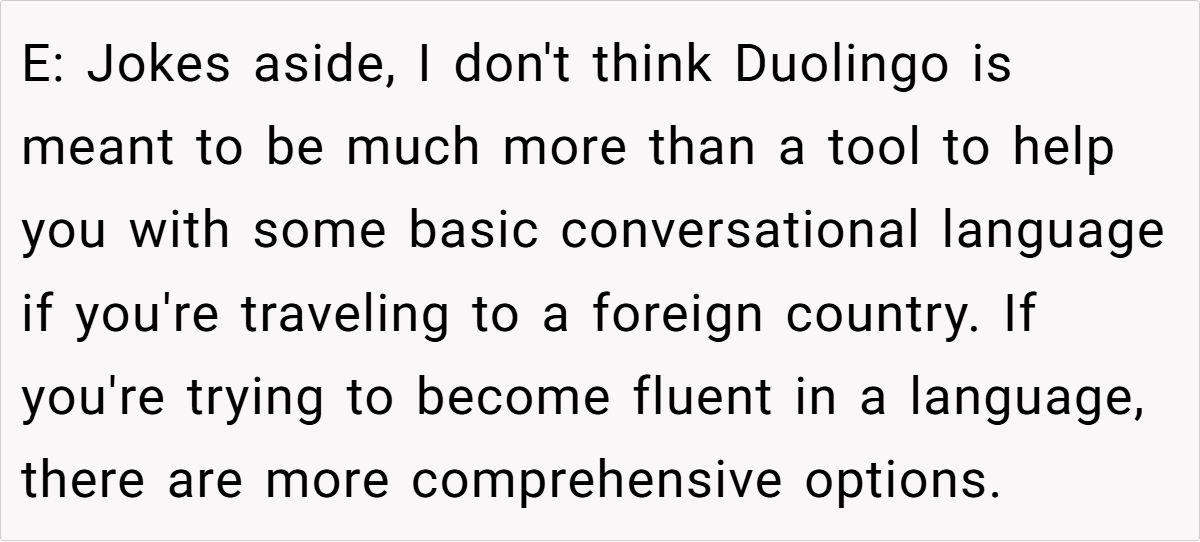




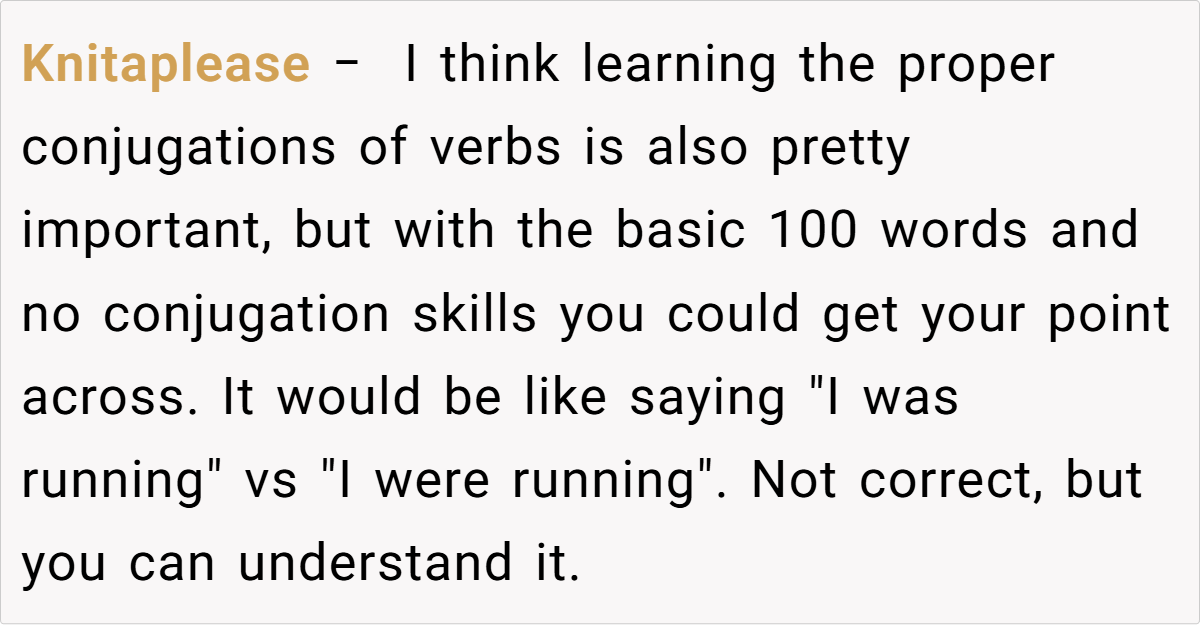

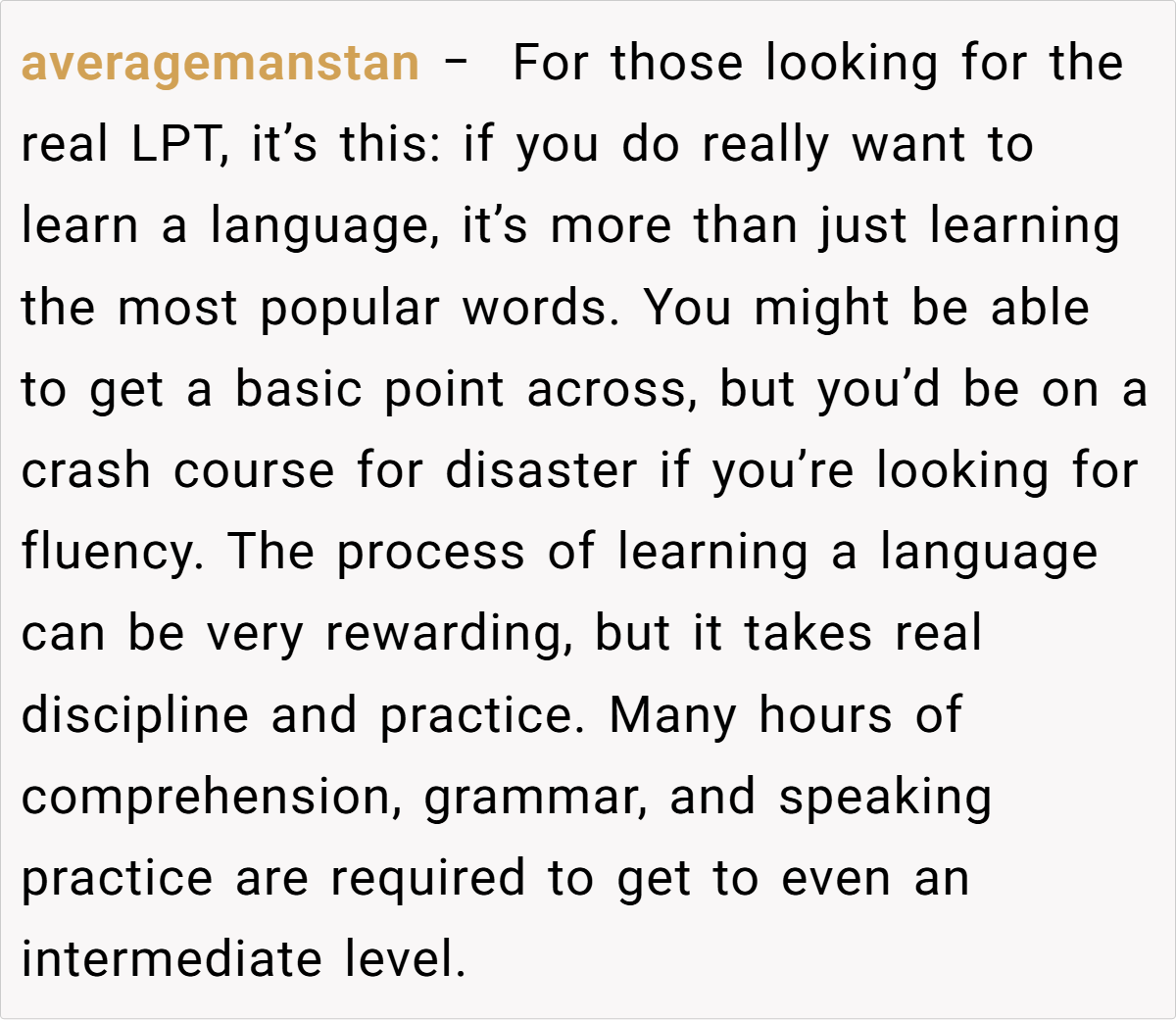
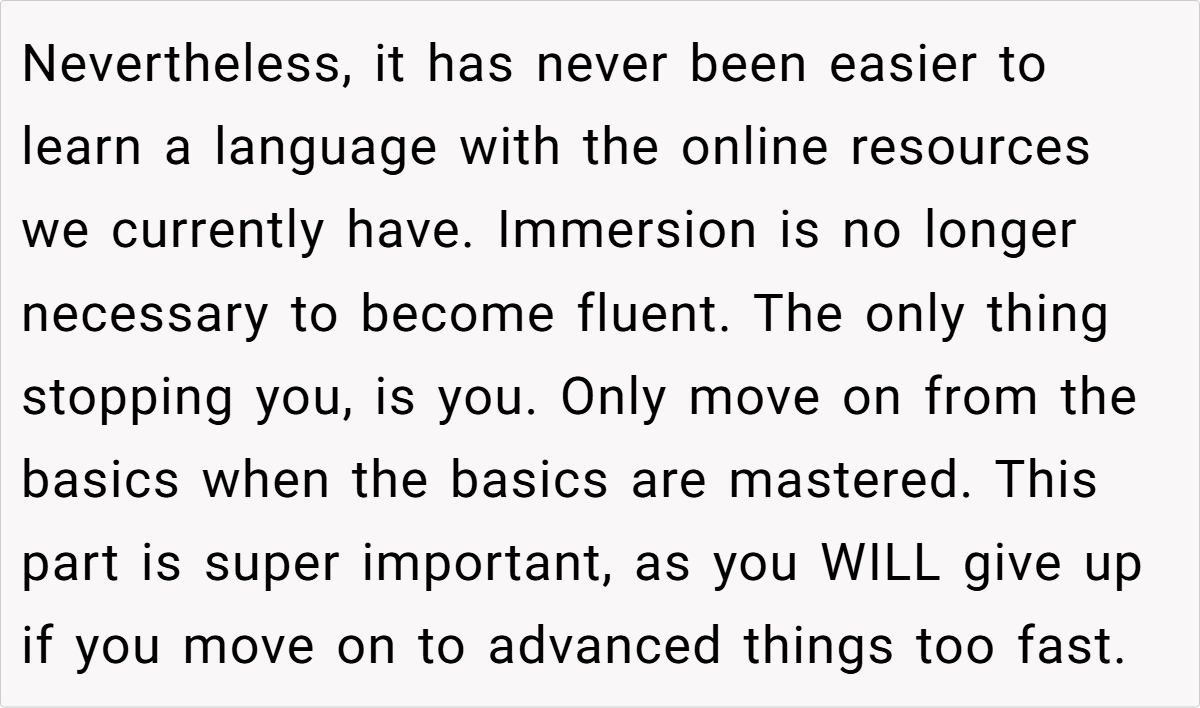
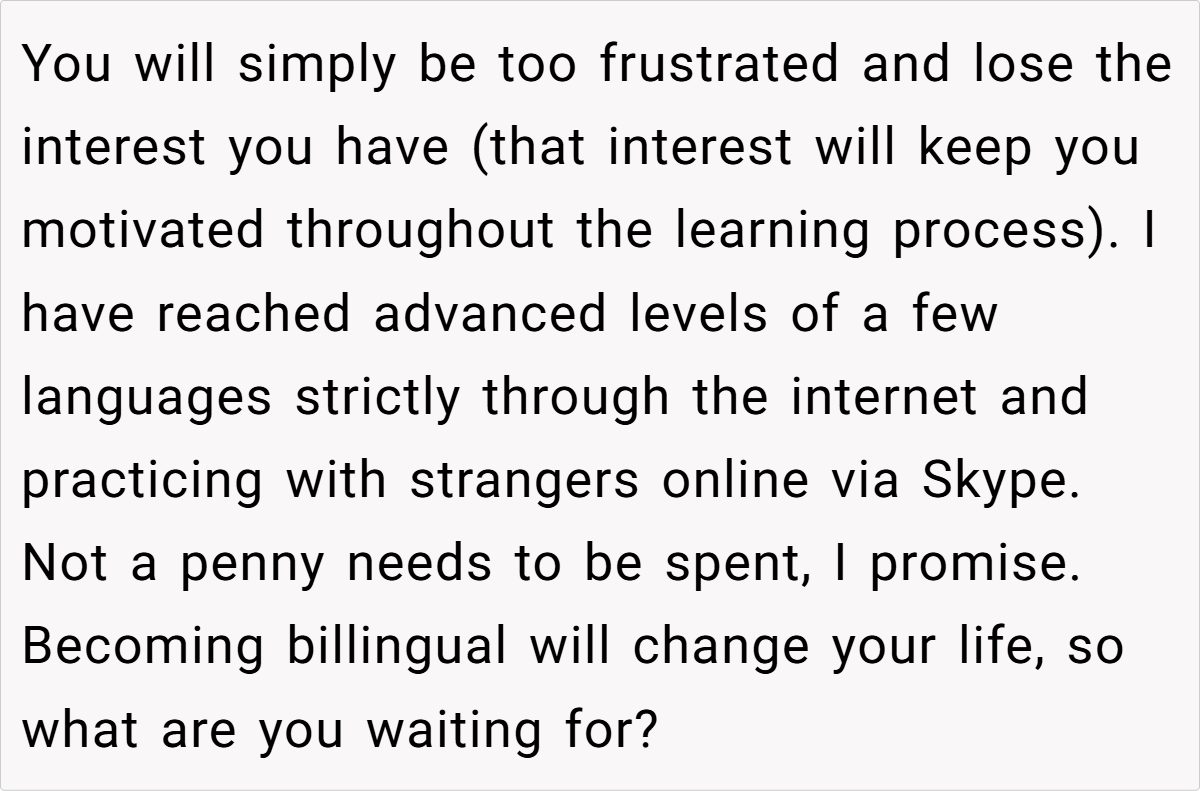

These are popular opinions on Reddit, but do they really reflect reality?
The journey to language fluency isn’t a sprint—it’s a marathon with strategic shortcuts. Starting with the most frequently used words provides an efficient entry point that builds confidence while maximizing comprehension. Whether you combine this approach with immersion techniques, language apps, or even falling in love with a native speaker (though we can’t guarantee relationship longevity!), the key is consistent practice and meaningful usage.
What about you? Have you tried focusing on high-frequency words when learning a language? Did it accelerate your progress, or do you prefer a different approach altogether? Share your language learning journey in the comments below—we’d love to hear about your successes, struggles, and clever hacks for mastering a new tongue!

